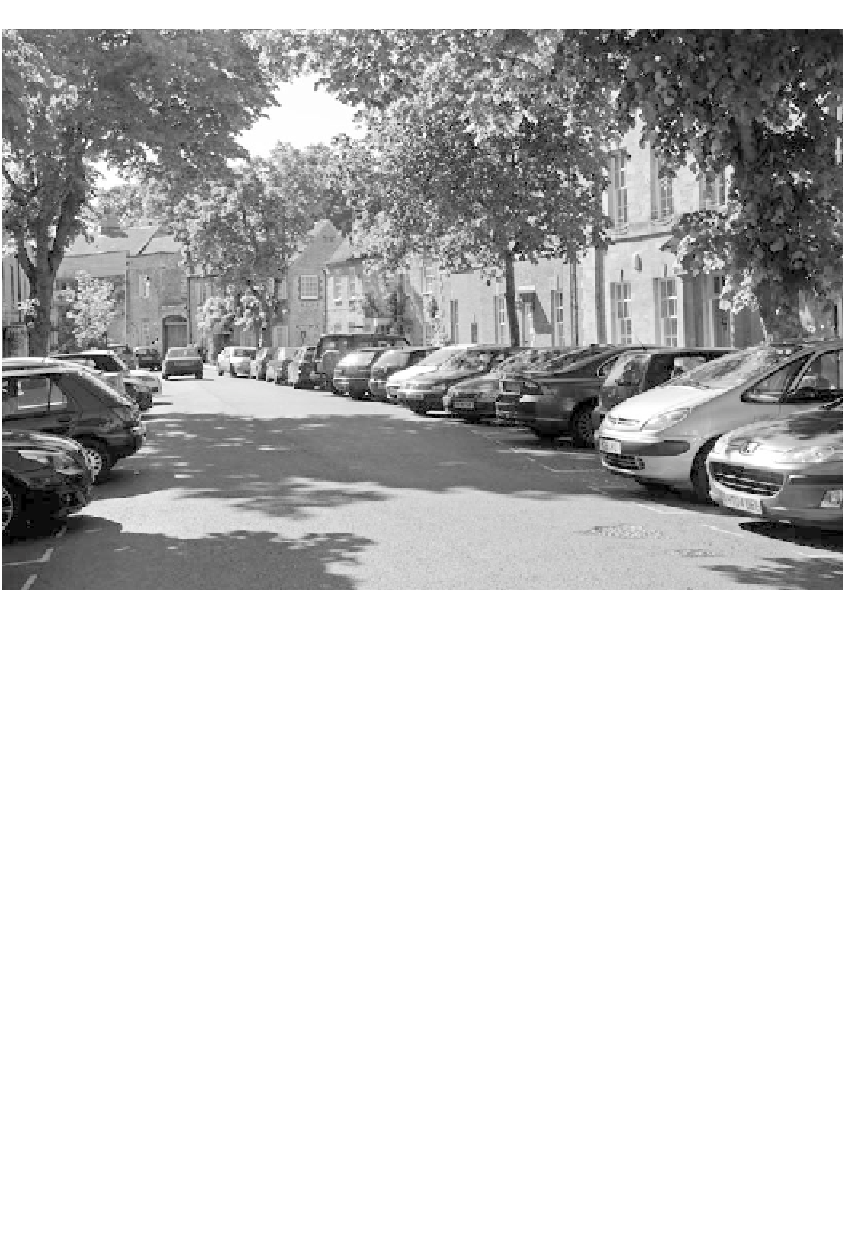Environmental Engineering Reference
In-Depth Information
Figure 4.4
Woodstock. The rural areas within the county are home to some very attractive market towns and
villages - many are overrun by cars.
potentially higher transport energy consumption and emissions. The first Oxfordshire County
Structure Plan, developed in the 1970s and reflecting the then growth model for London,
displaced growth to designated towns beyond the green belt, principally Banbury, Bicester,
Didcot and Witney. This strategy can perhaps be viewed as a forerunner to PPG13 (Department
of the Environment, 1994; Department of the Environment Transport and the Regions, 2001),
where new residential development is encouraged in established urban areas (Headicar, 2009;
2010; Hickman et al., 2012b). It is in the urban areas that facilities can be accessed easily,
where there are better prospects for local employment creation and higher levels of public
transport accessibility. Sporadic development throughout the county has in the main been
avoided, and there are some very attractive rural areas, villages and market towns.
An unanticipated problem resulting from the largely effective land-use planning regime
has been that the level of self-containment within the designated growth towns has been low.
Although 70 per cent of the commuting trips of residents in Oxford are 'short' (less than
5 miles), less than 35 per cent of trips from the expanded towns are in the same short-distance
cohort. The majority of trips are in the 5-25 mile distance band, and most are made by car.
Car driver distance per resident worker is 3.9 miles in Oxford relative to 8.5 miles in the
expanded towns (Headicar, 2010). This 'many-to-many' origin and destination travel pattern
creates difficulties for public transport provision throughout Oxfordshire, with many tangential
journeys evident, as well as the more conventional radial journeys centred on Oxford. These
types of movement are difficult to serve by conventional public transport. Sustainable transport
initiatives still need developing in Oxford, but also throughout the outlying towns and villages.
It is here that it is most difficult to reduce car dependency.

